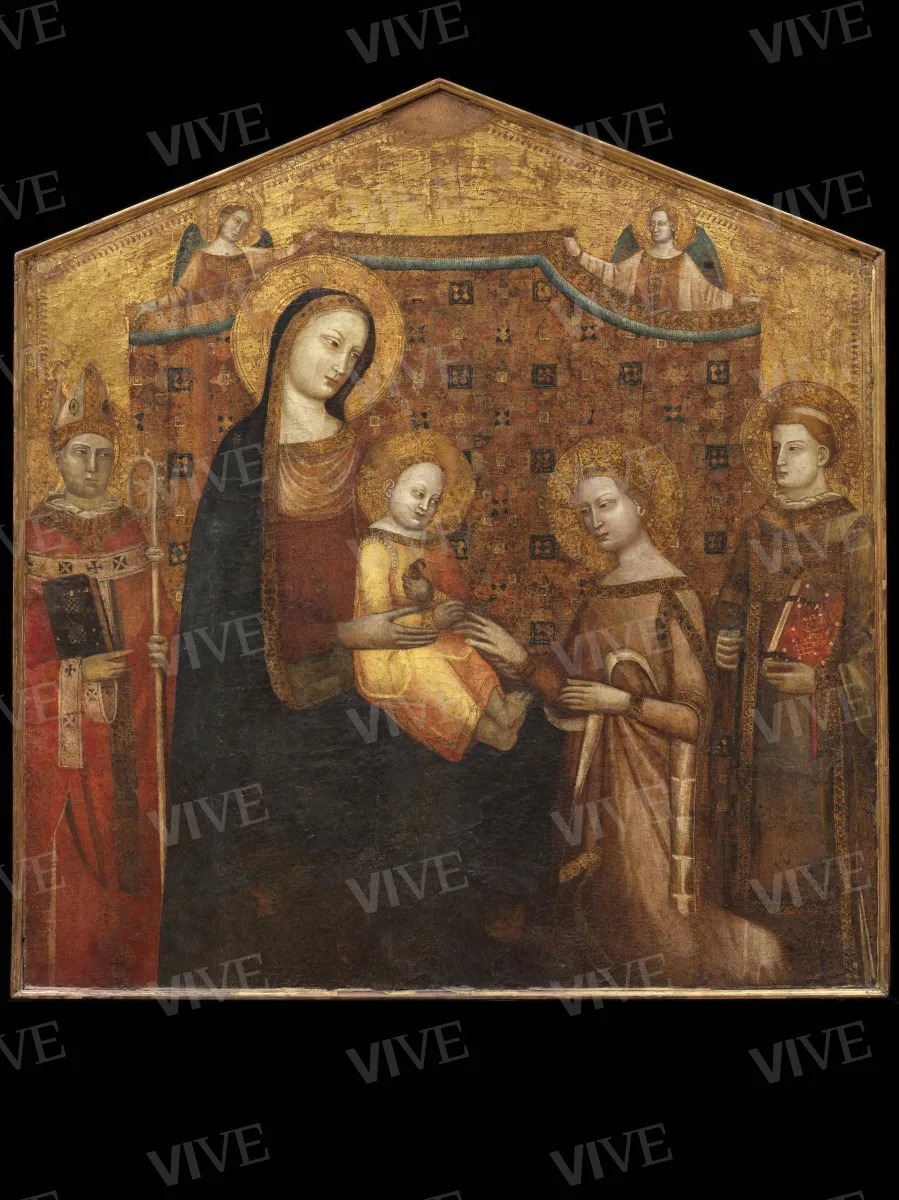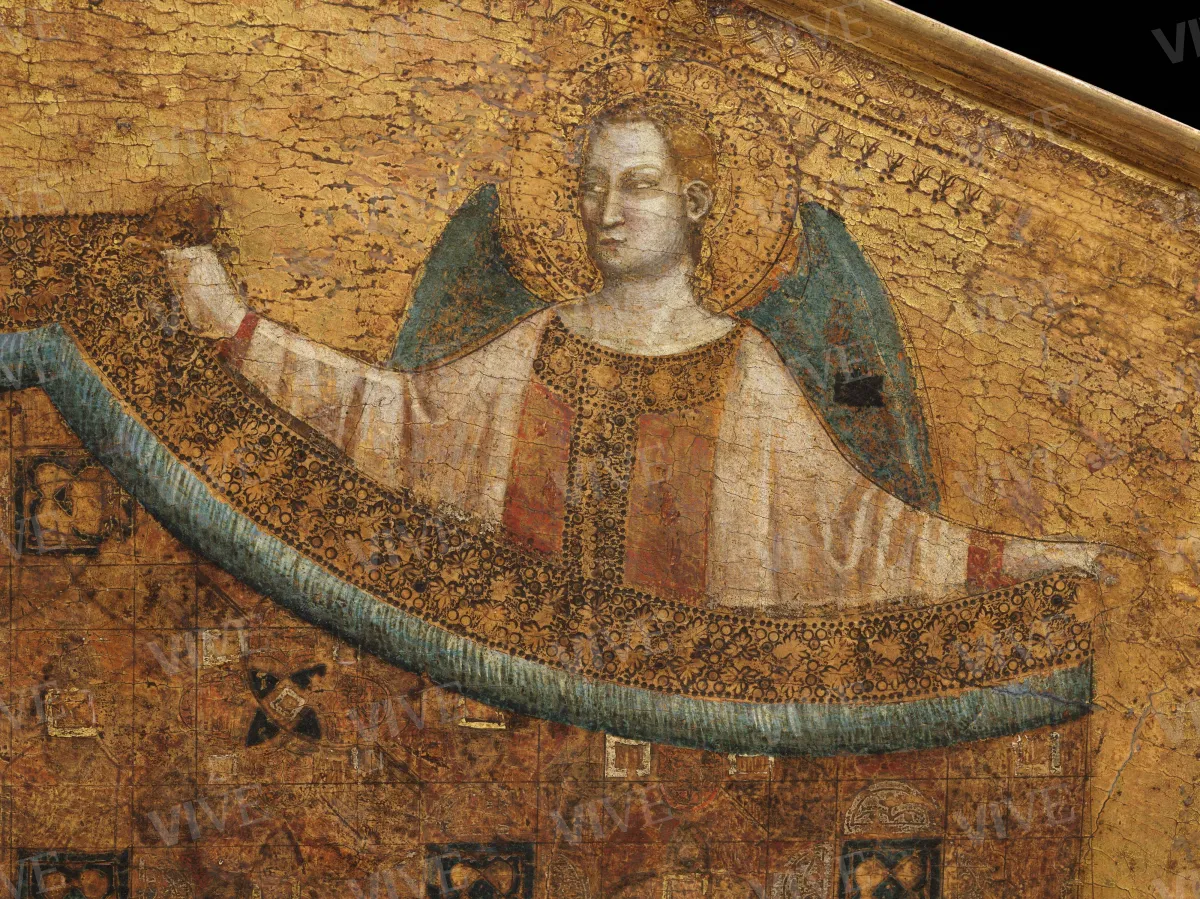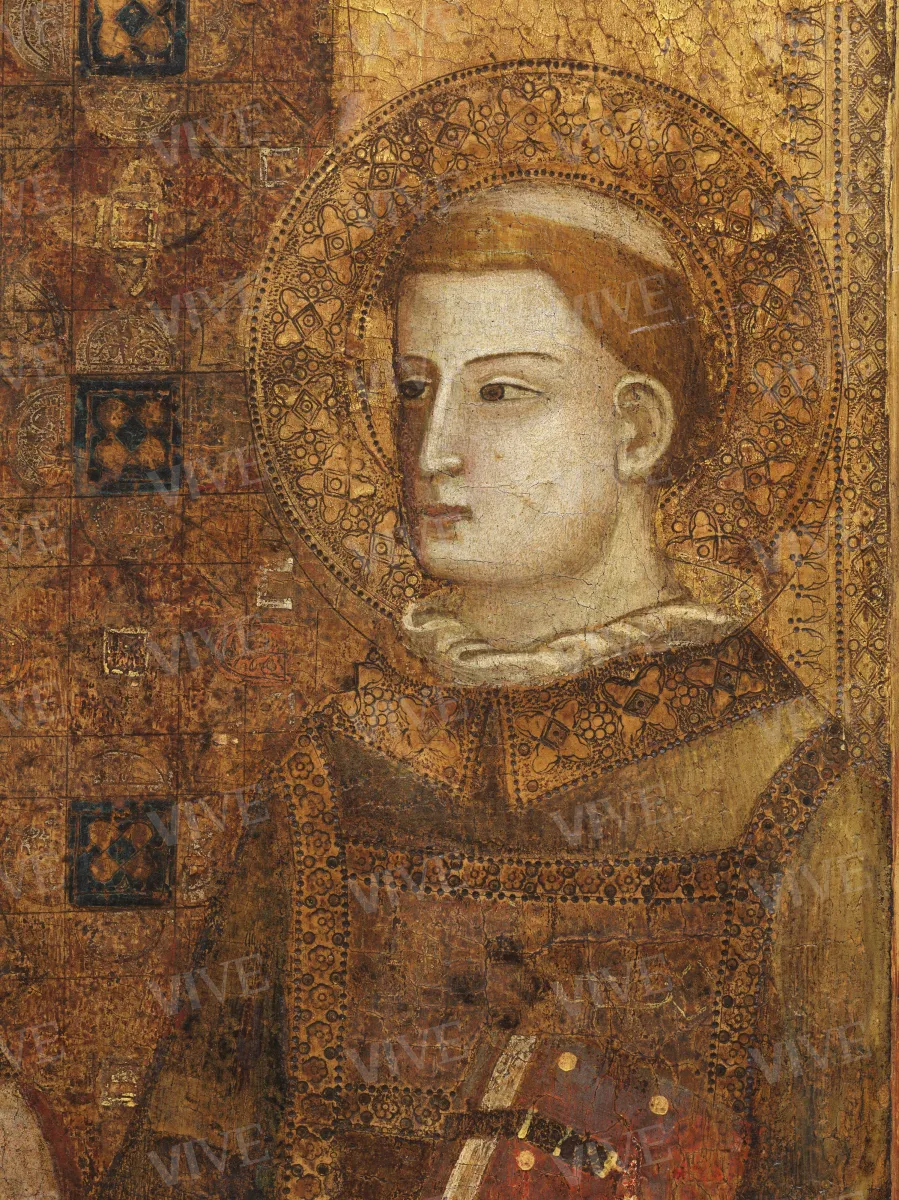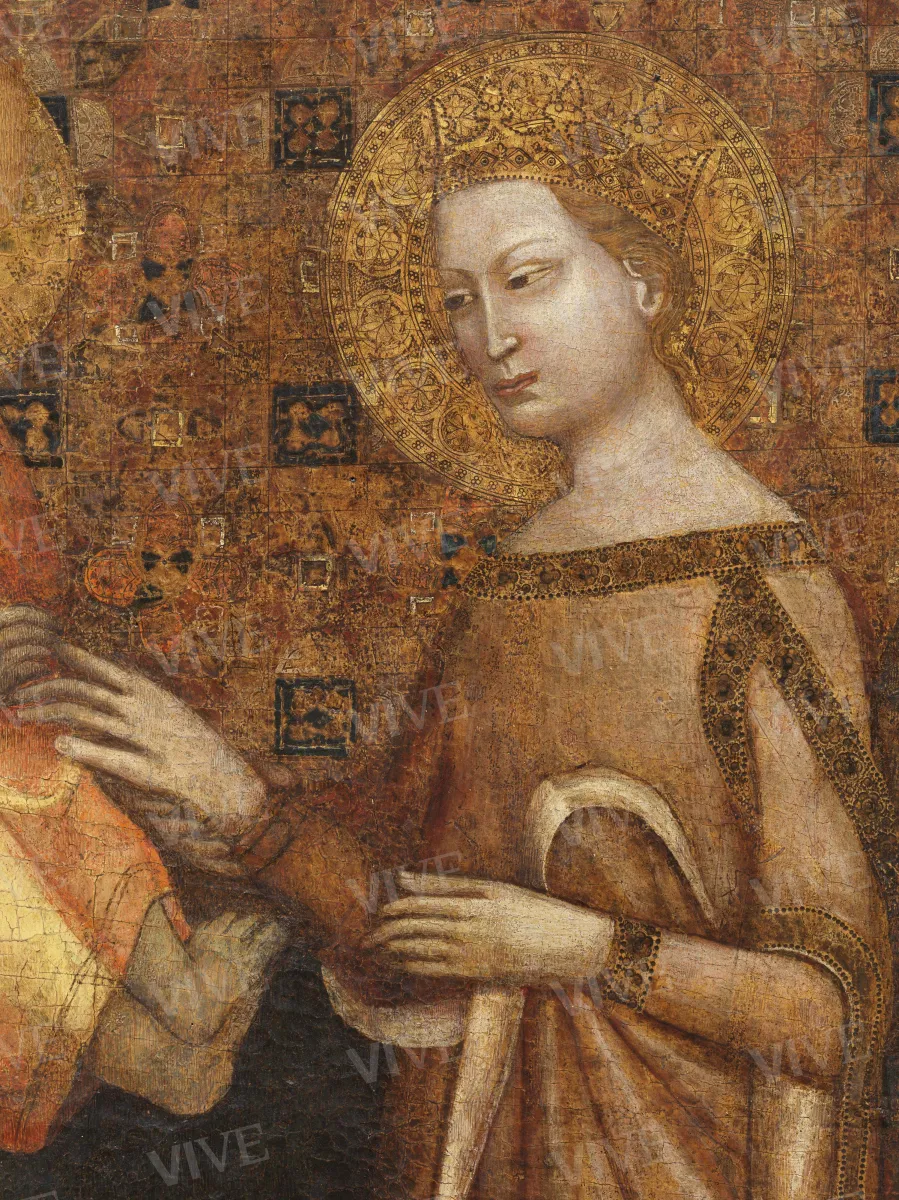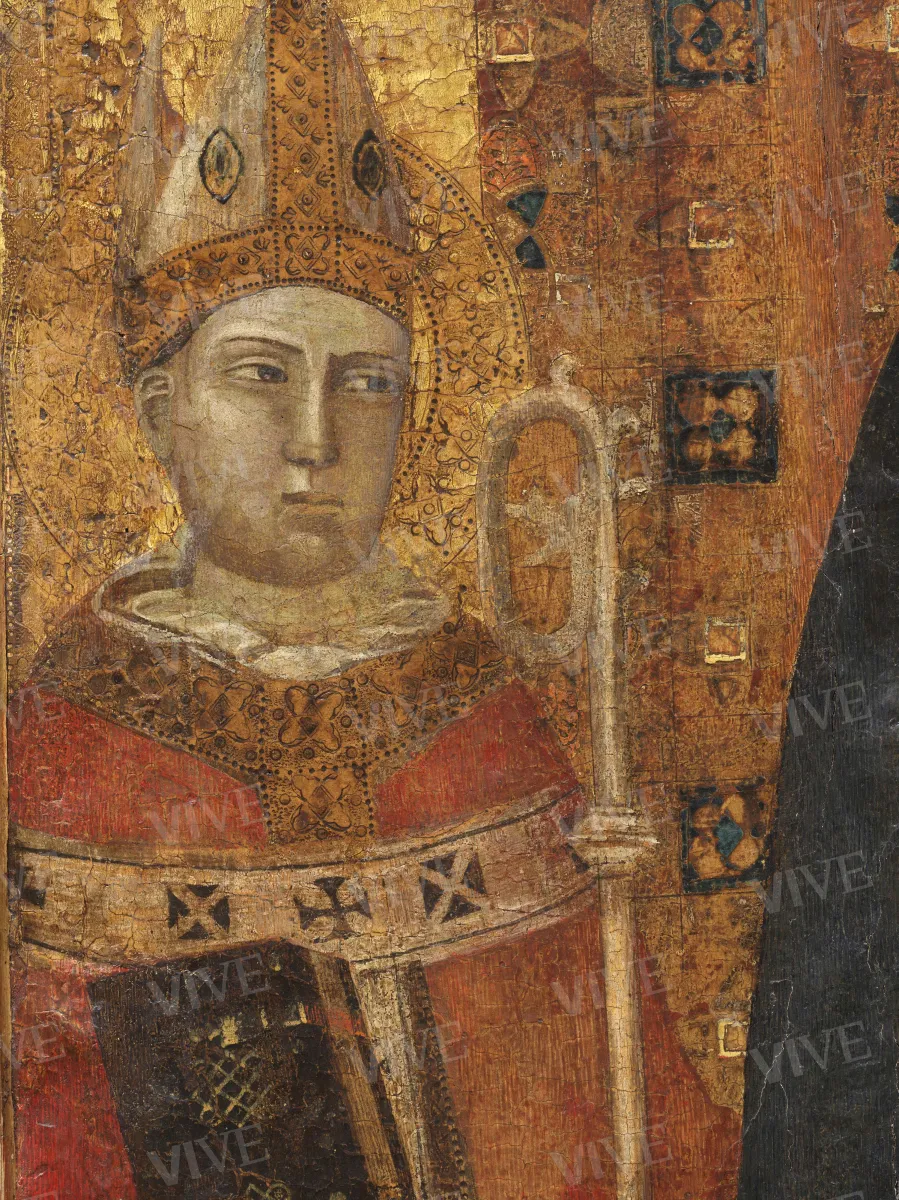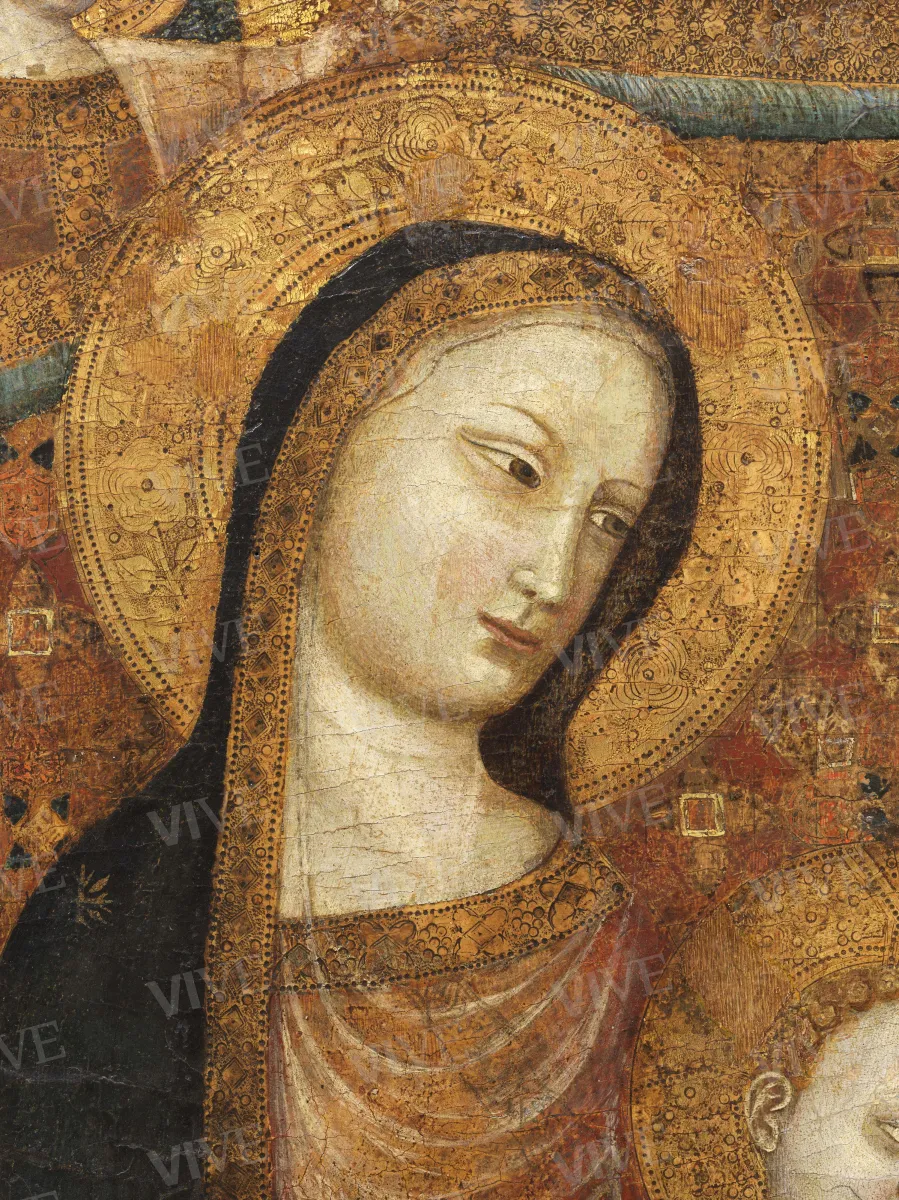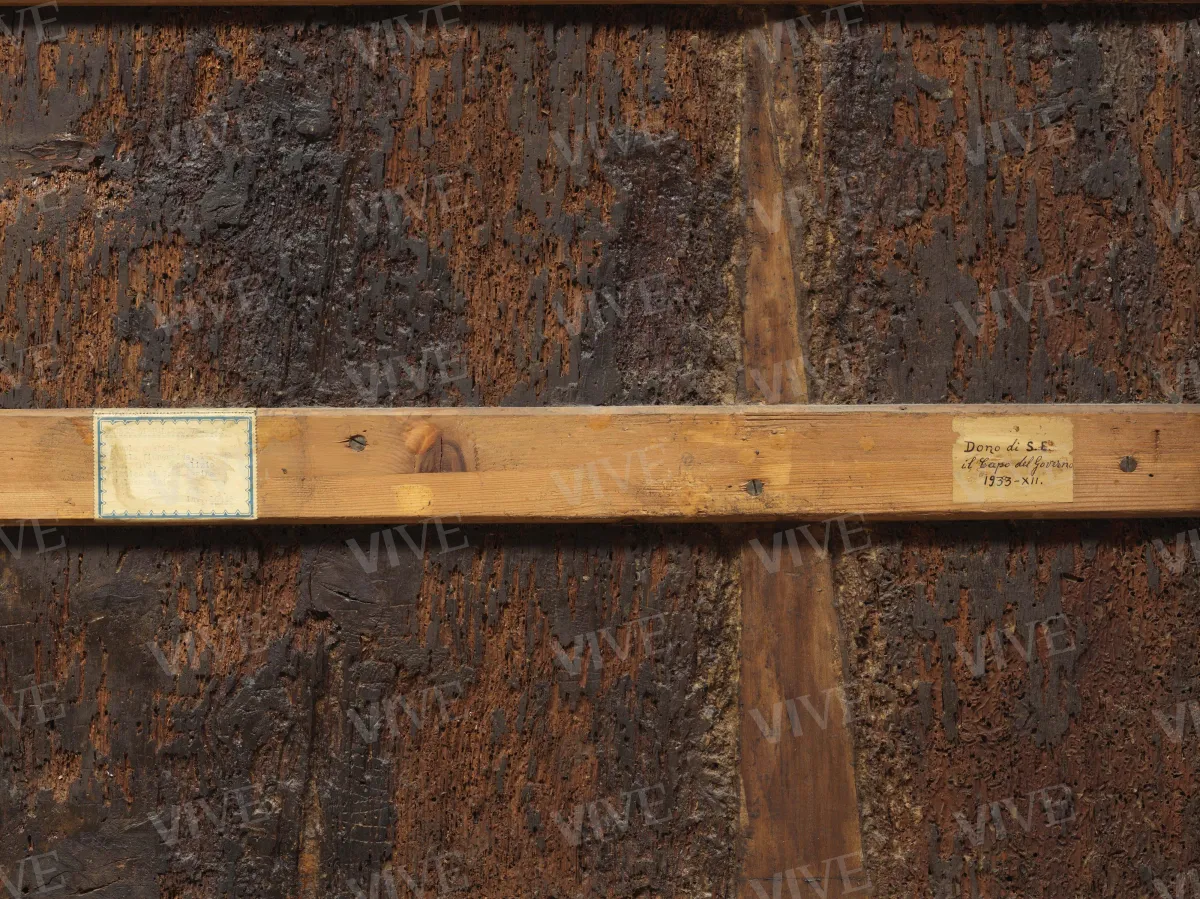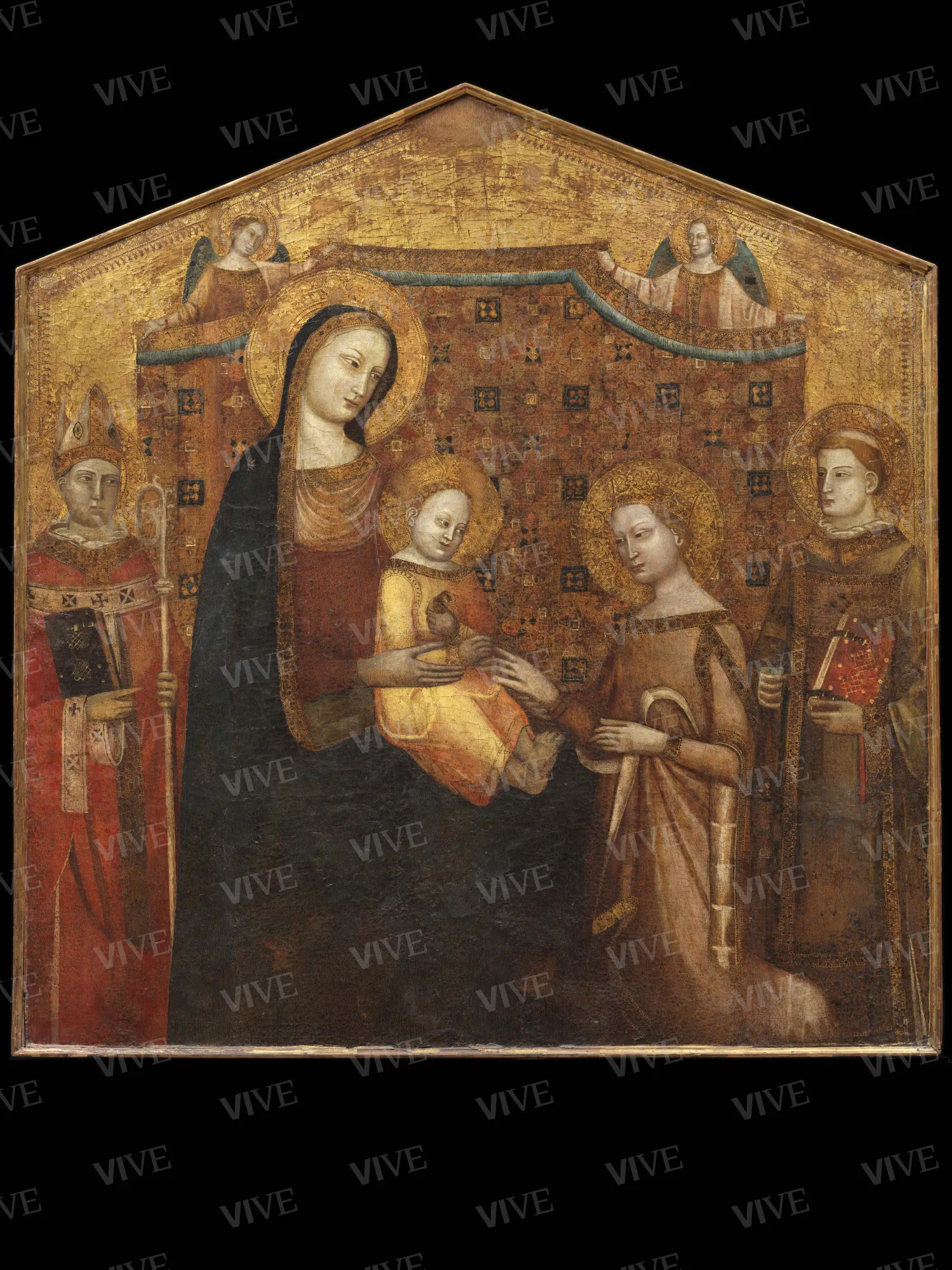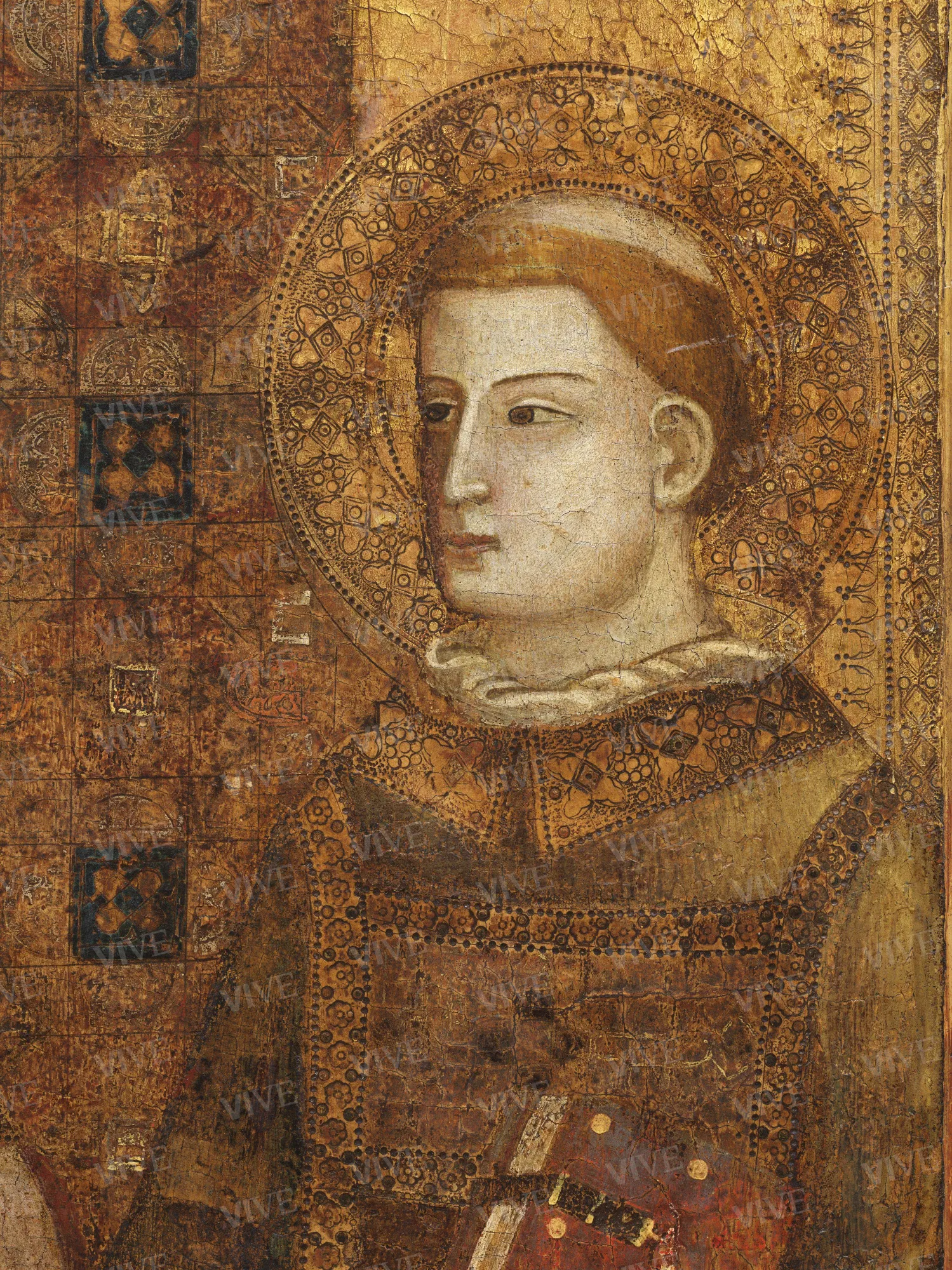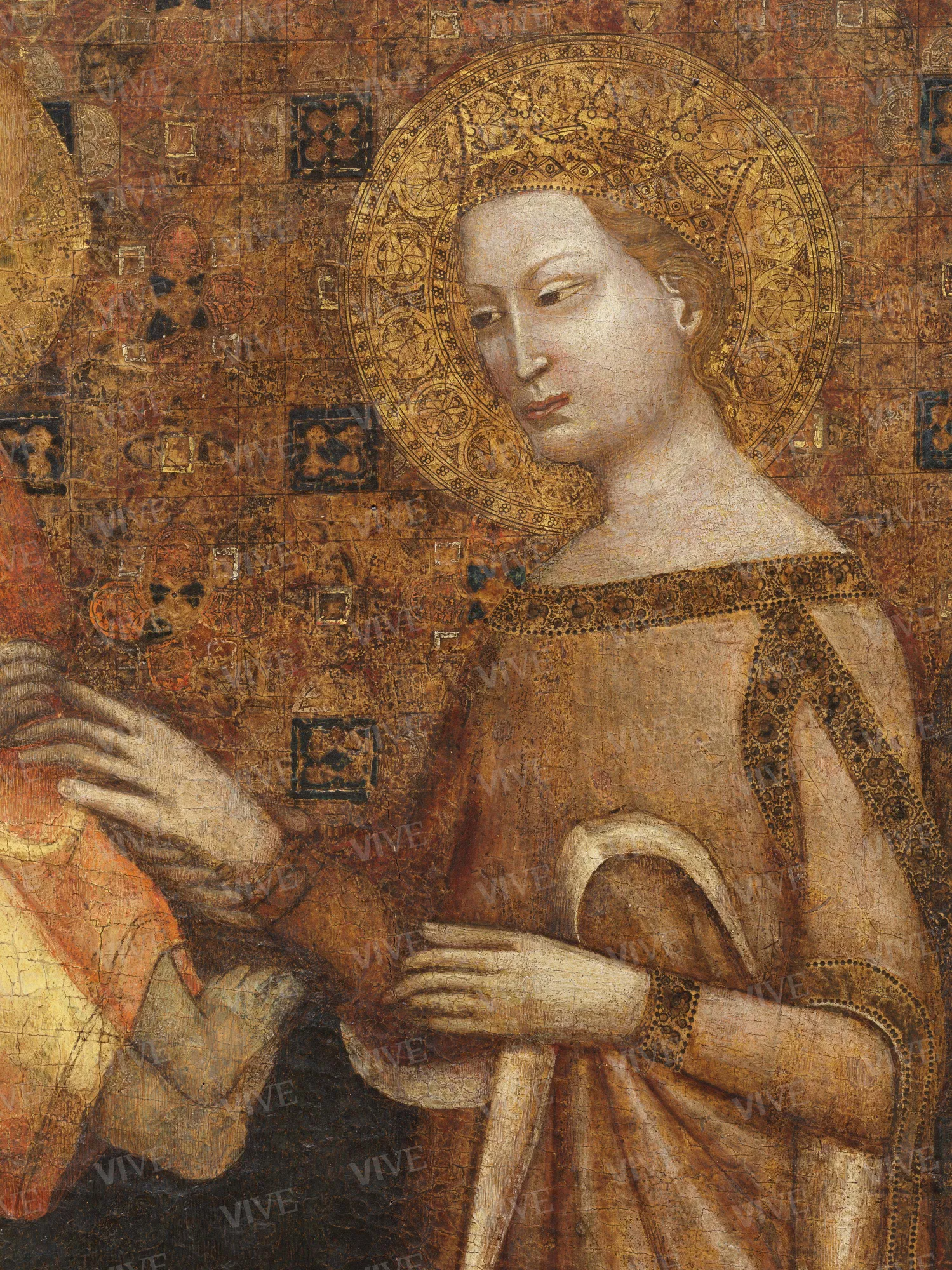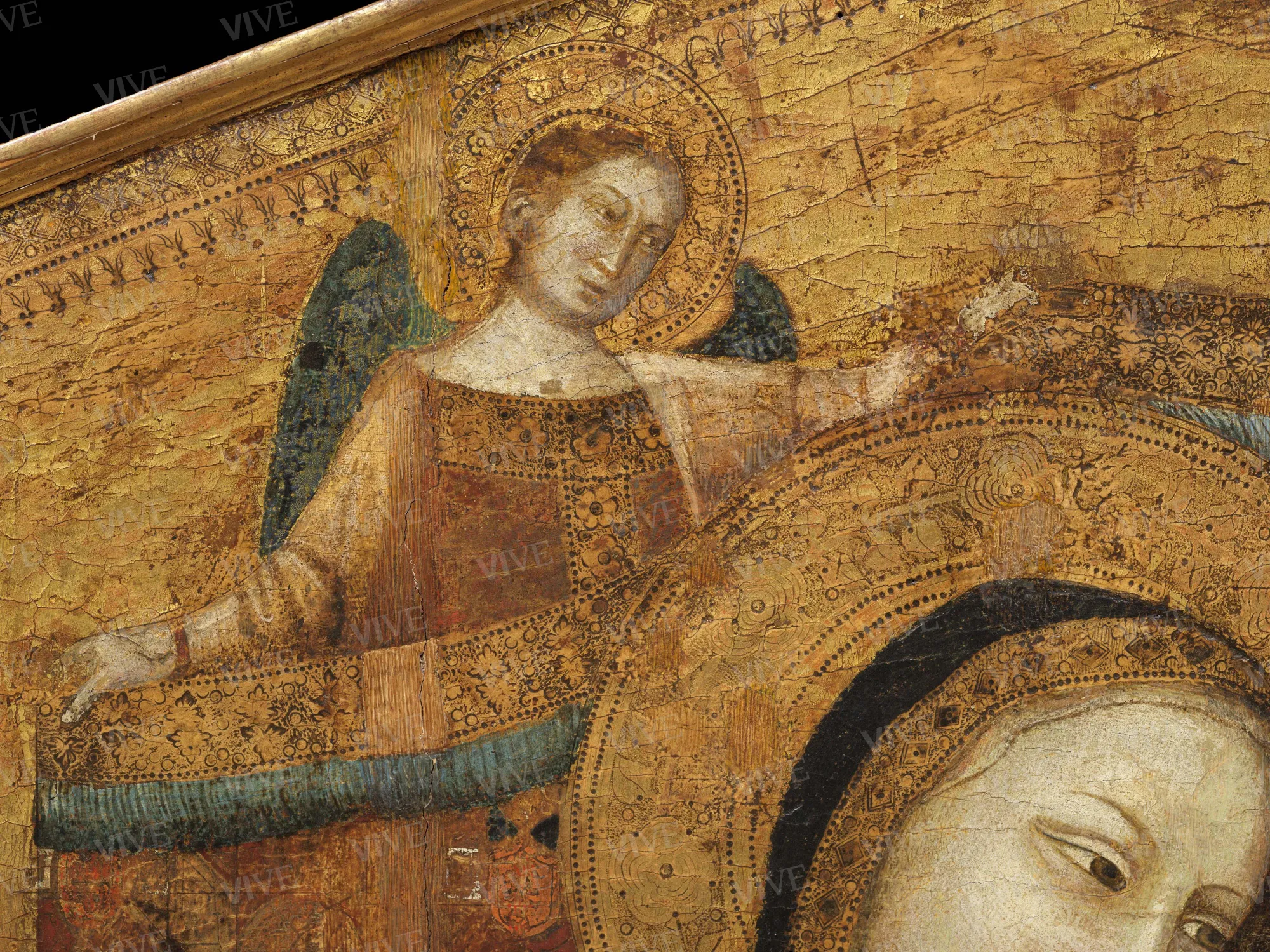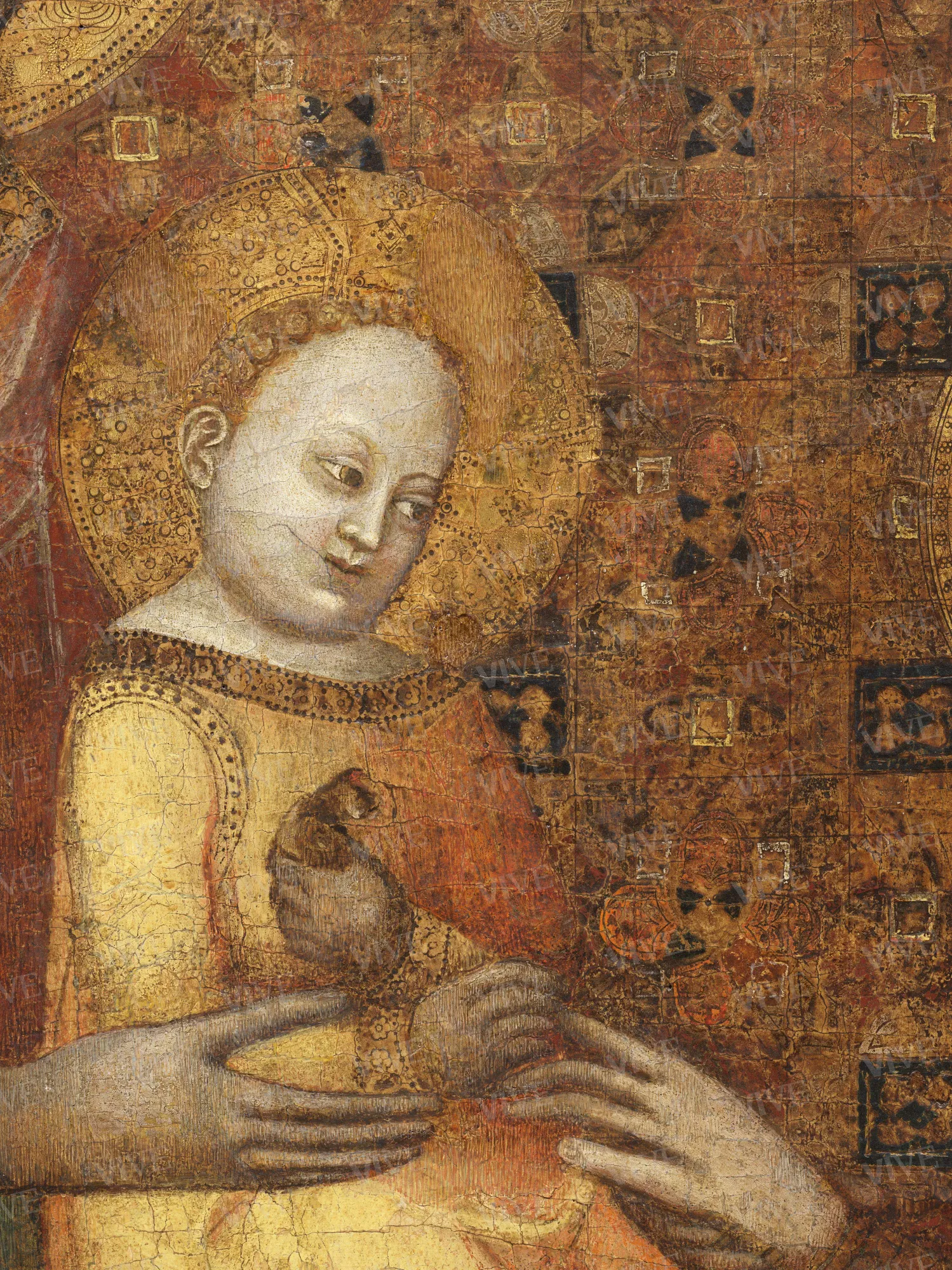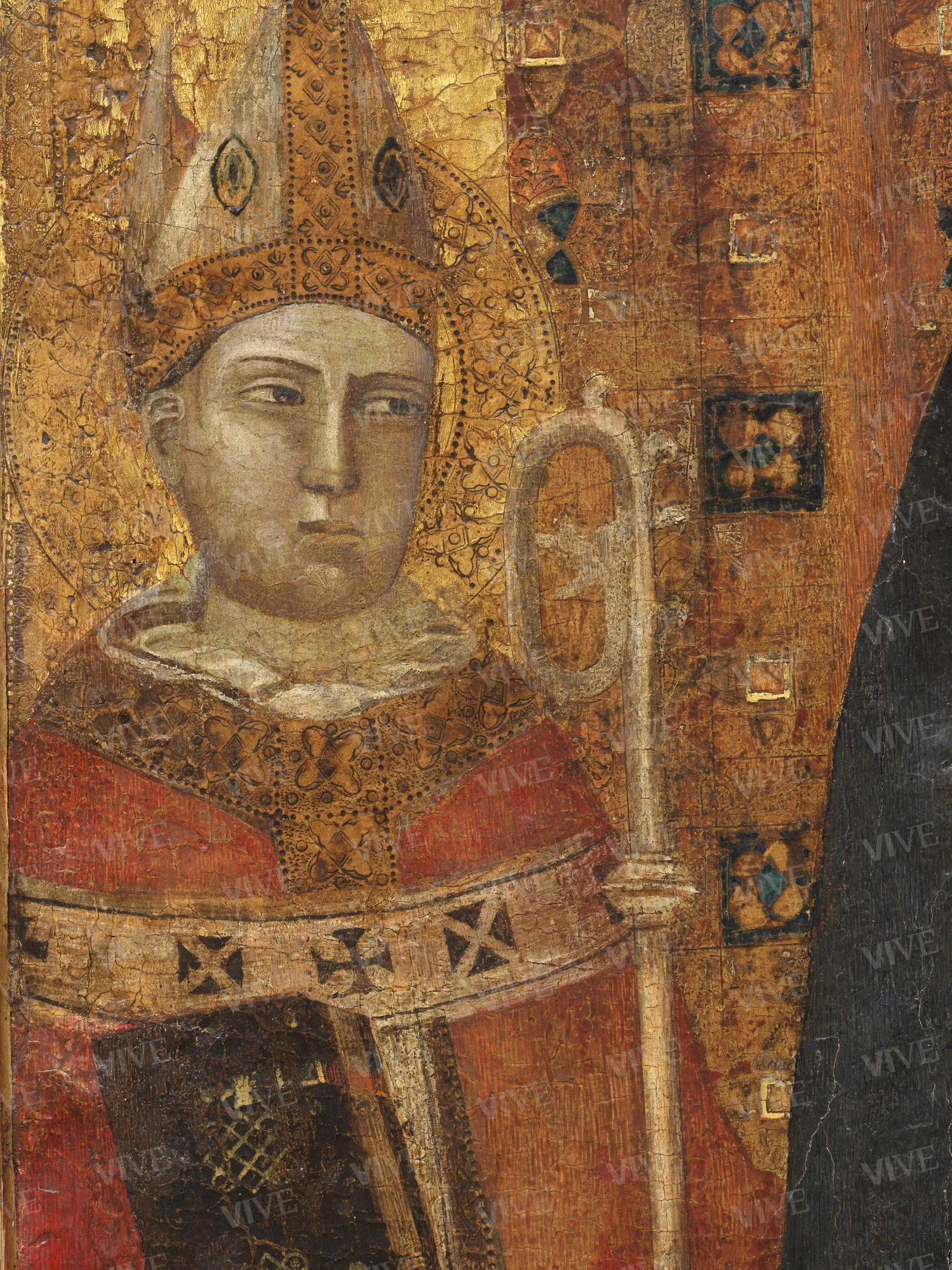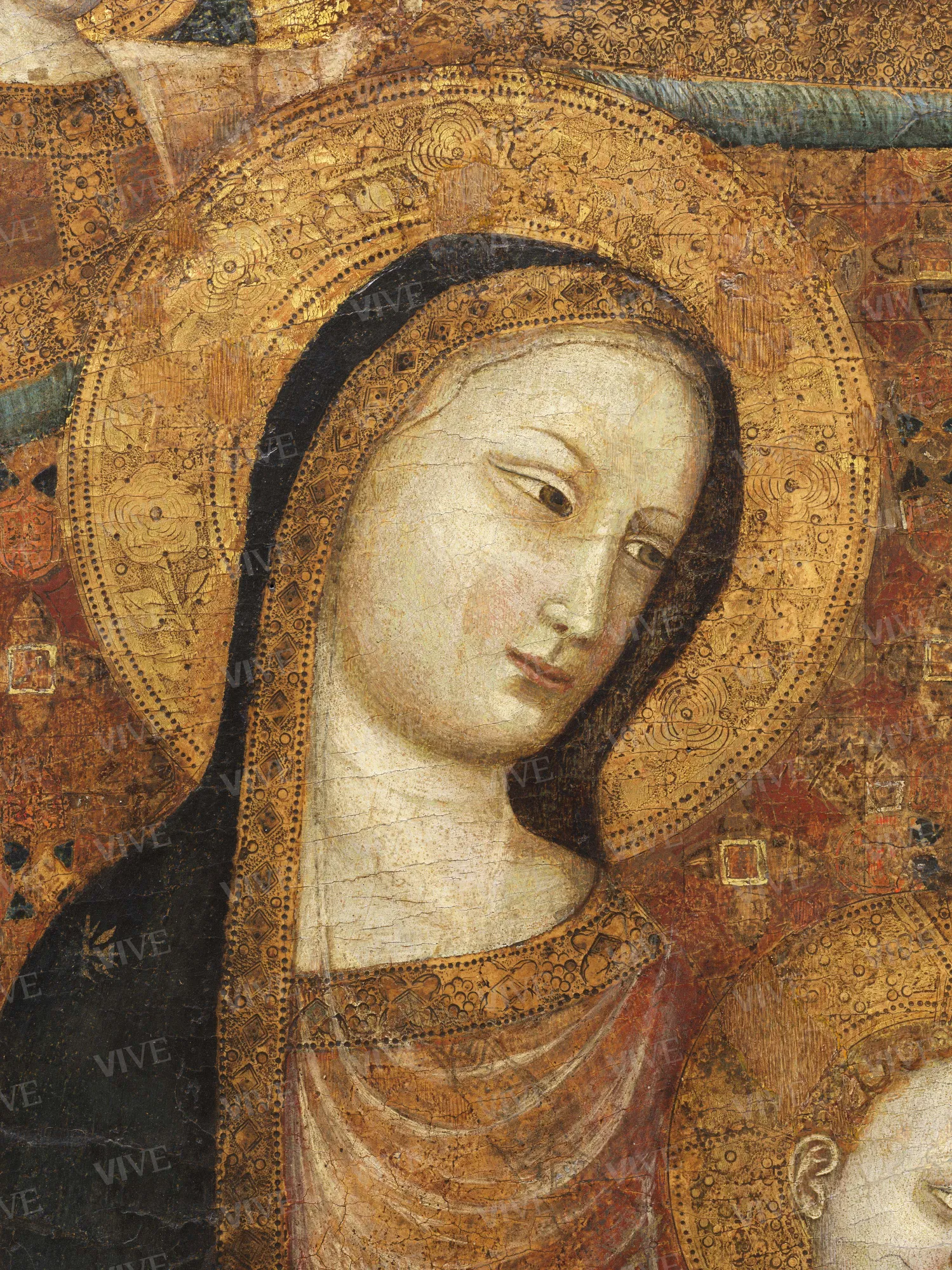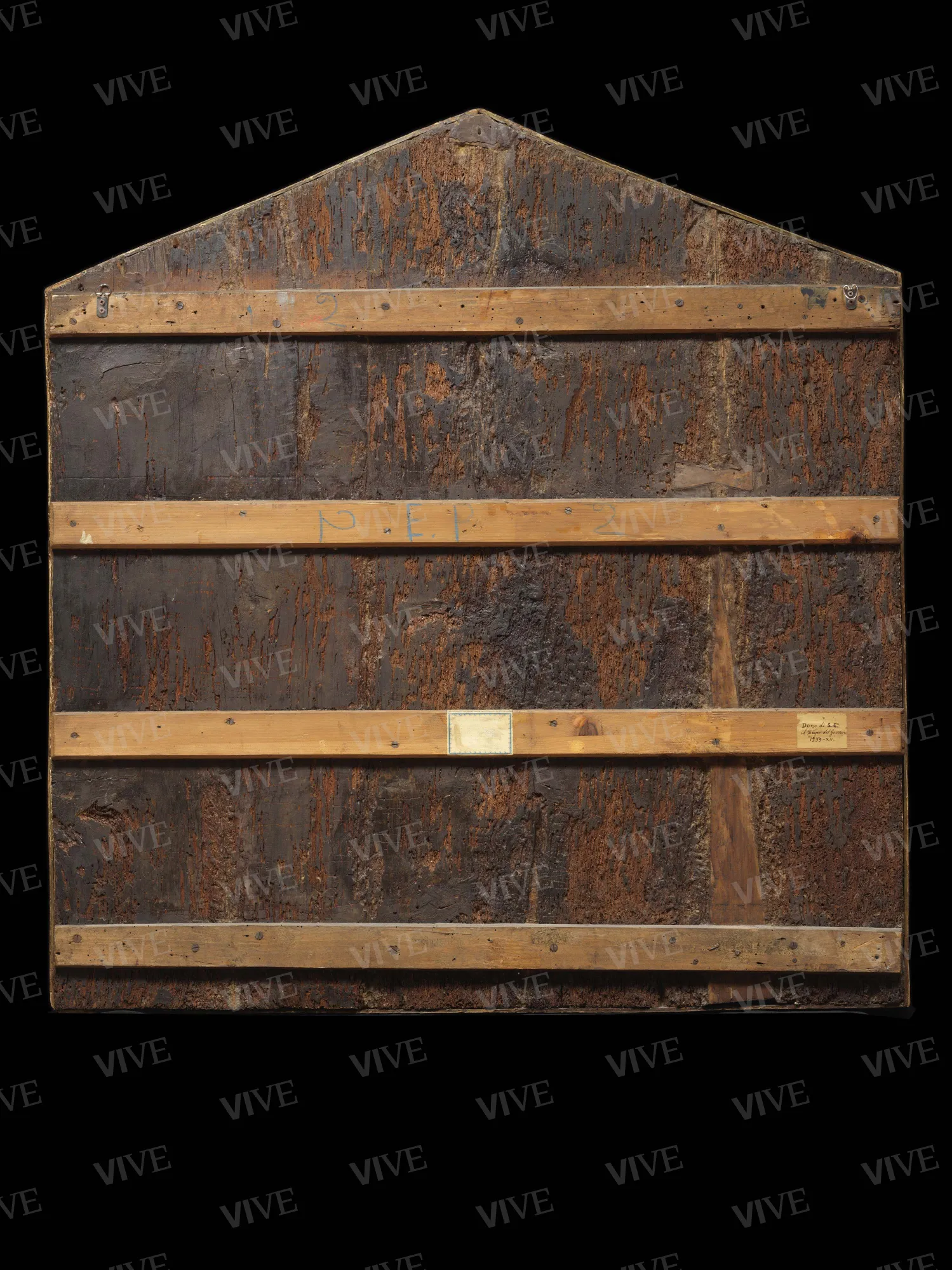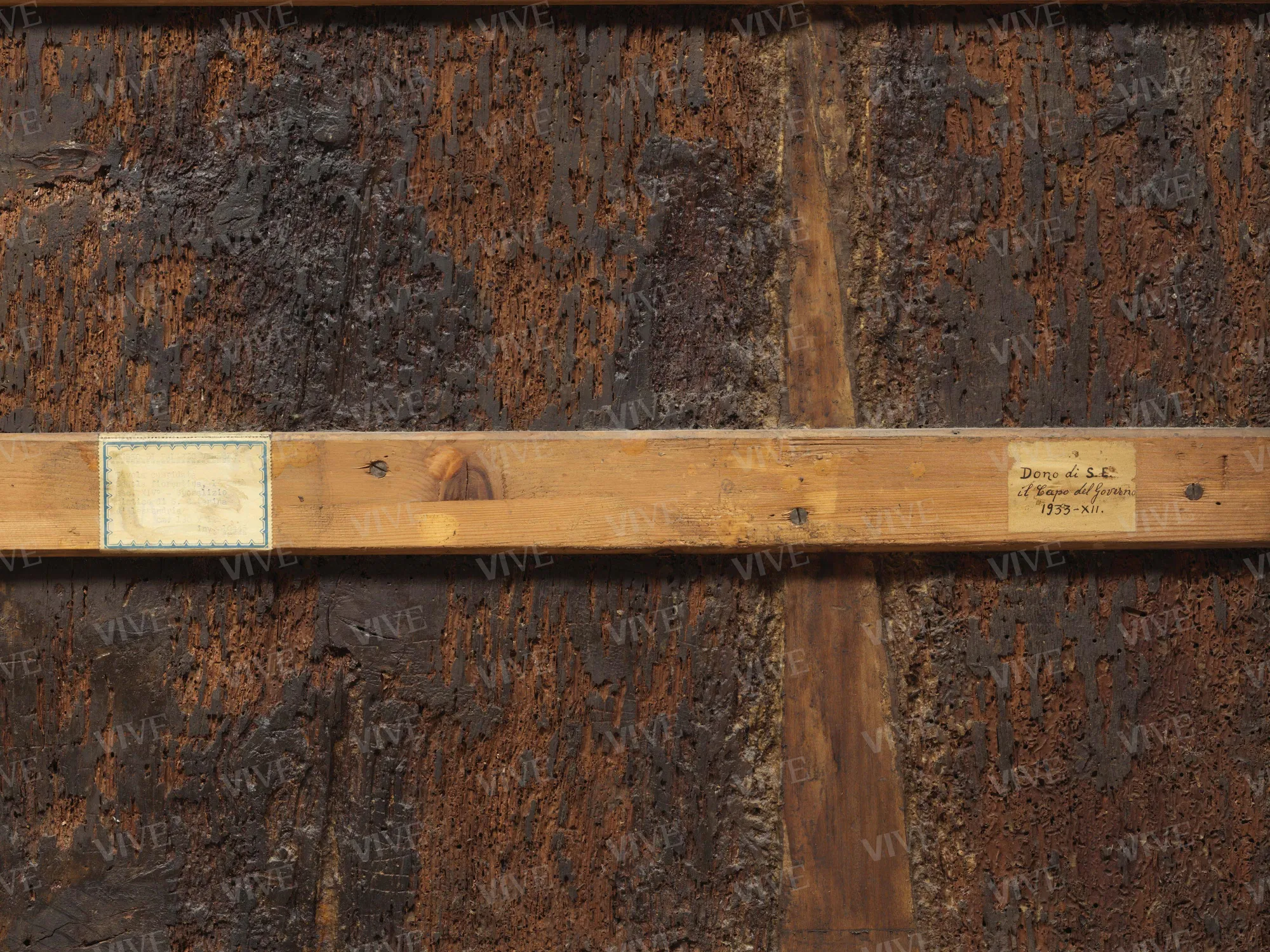Mystical Marriage of Saint Catherine of Alexandria between a Holy Bishop and a Holy Deacon
Master of the Christ Church Coronation 1370s
Tempera painting on panel depicting the Mystical Marriage of Saint Catherine of Alexandria between a holy bishop and a holy deacon. The panel has a cusped form with a gilded wooden frame in the contemporary style. The state of preservation is fair, with noted abrasions, missing sections, and exceptional hatched additions. The painted surface is partly obscured by dense, inconsistent deposits, and the surface is almost completely crackled.
Tempera painting on panel depicting the Mystical Marriage of Saint Catherine of Alexandria between a holy bishop and a holy deacon. The panel has a cusped form with a gilded wooden frame in the contemporary style. The state of preservation is fair, with noted abrasions, missing sections, and exceptional hatched additions. The painted surface is partly obscured by dense, inconsistent deposits, and the surface is almost completely crackled.
Details of work
Catalog entry
The panel is a rectangular in shape and slightly higher than it is wide; it is cuspidate in form.
The main subject, the Mystic Marriage of Saint Catherine of Alexandria, is centrally placed. The characters are arranged in front of a drape decorated with geometric patterns and held from above, on either side, by two angels. On the left is the Virgin, in a slightly three-quarter pose, wearing a dark blue mantle edged in gold and a red robe with a wide neckline, also edged in gold. Her head is covered both by the mantle and a diaphanous veil that falls to below the neckline of the robe. A plump, golden-locked Baby Jesus is sitting in his Mother’s lap. He is wearing a little yellow frock with a broad neckline down to his shoulders. In his left hand he appears to be clutching a sparrow while he is using his right hand to slip a ring onto the right ring finger of Saint Catherine, whose hand is being presented to the Child by the Virgin. Saint Catherine, kneeling before the two sacred figures, is dressed in the fashion of a rich, fashionable princess, with a crown and miniver-lined robe with a wide neckline. On either side of the mystic marriage characters are a holy bishop and a holy deacon, on the left and right respectively. The two figures are not given any particular iconographic attributes to help us establishing their identity.
The painting has not much been dealt with by art history scholars. Absent from Antonino Santangelo’s catalog of the paintings of Palazzo Venezia (Santangelo 1947) and labeled generically as belonging to the Florentine school of the second half of the fourteenth century by Zeri (1955, p. 9), it was Miklós Boskovits (1975, p. 212, note 56) who first attributed the panel to the anonymous Master of the Christ Church Coronation, whose activity was reconstructed by Offner (1947, p. 249).
Cecilia Scalella (2001, pp. 121–122) has recently dedicated scholarship to the work.
Based on the body of works by the anonymous Florentine painter, the Master’s production could be traced to Florence and Valdarno between the 1350s and 1370s. In the painter’s early works, there seems to be a stronger stylistic indebtedness to Bernardo Daddi. As his careeer progressed, however, he moved closer to the workshop of Orcagna or artists close to him such as the Master of Barberino. Stylistic elements thus reveal a simplified drawing with marked outlines, accentuated plasticism, rigid, inflexible poses, and an austere compositional sensibility (Scalella 2001, pp. 117–120).
These stylistic features also tie in well with the Mystical Marriage at Palazzo Venezia, which, as can also be seen from an analysis of the fashion details of the robes—the wide necklines of the dresses of Saint Catherine and the Virgin—seems to be datable to the 1370s. This would make it coeval with the triptych at Fécamp in the Musée de la Bénedictine, which bears the date 1373 on its sixteenth-century frame (Scalella 2001, p. 122).
Valentina Fraticelli
Entry published on 12 February 2025
State of conservation
Fair. Noted abrasions, missing sections, and exceptional hatched additions. The painted surface is partly obscured by dense, inconsistent deposits, and the surface is almost completely crackled.
Restorations and analyses
The painterly reintegrations in a clearly identifiable style and the non-original parquetry would suggest that the restoration was undertaken relatively recently, but a definitive date can not be established.
Provenance
Gift of Benito Mussolini (December 1933), as stated in the plaque attached to the back of the painting.
References
Offner Richard, A Critical and Historical Corpus of Florentine Painting, III, The Fourteenth Century, V, New York 1947, p. 249;
Museo di Palazzo Venezia. Catalogo. 1. Dipinti, Santangelo Antonino (a cura di), Roma 1947;
Catalogo del Gabinetto Fotografico Nazionale. 3. I dipinti del Museo di Palazzo Venezia in Roma, Zeri Federico (a cura di), Roma 1955, p. 9;
Boskovits Miklós, Pittura fiorentina alla vigilia del Rinascimento 1370-1400, Firenze 1975, p. 212, nota 56;
Scalella Cecilia, Contributi alla pittura fiorentina del secondo Trecento: il "Maestro dell’Incoronazione della Christ Church Gallery", in «Arte cristiana», 89, 2001, pp. 117-130 (pp. 121-122).

